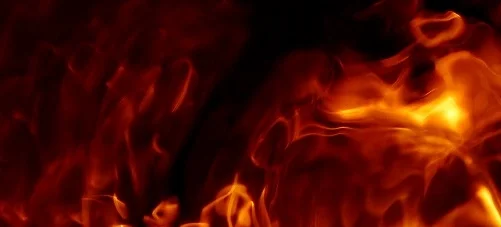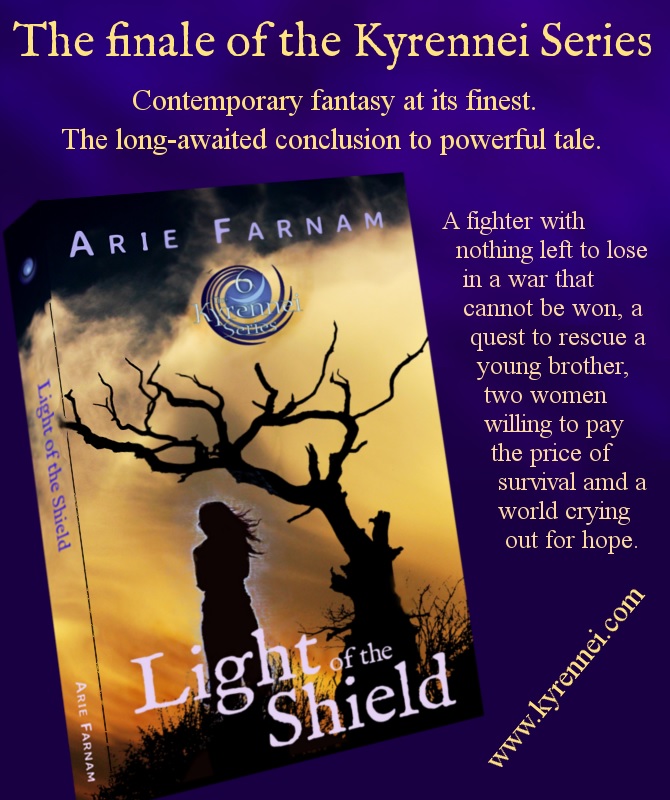Impressions of yellow and blue
/All talk and no results, you say? I’ve been talking up a lot of new things over the past few months—a new guide dog and an MFA program in creative writing. Where are the goods?
Here are the goods. You waited and you now get your literary dessert—a fun, cheerful story from Arie without any of the existential dread or pondering on the world’s giant problems. I’m busy writing for my graduate program, so this month my post is one of my writing assignments, this one about color. And you get to meet my guide dog, Conway, in the process.
Enjoy!
Conway, a tuckered-out new graduate of guide dog school
Blind people don’t see black. In fact, most people called blind see something—swirls of color, fragments of light, puffs and blurs and shadows.
And those who see nothing, see nothing. Not black. Try looking out of the sole of your foot. What’s the color there?
But I am not one of those. I see like an impressionist painting, a canvas on which someone went wild with a brush, in a frenzy of creative verve and abandoned logic.
A tree is a spray of emerald and jade, velvet shadows and nut gray trunk. A paper on a dark table is a shocking white splotch, out of place, a mistake in the fabric.
After nearly fifty years in this fuzzy kaleidoscope of nuisance and occasional striking beauty, I put my name in for a guide dog, a partner to bring order to the wildness, to set me straight and maybe give me more of my own choices.
Two years later, I get the call to a training course. Bring lots of shoes. You’ll be walking many miles. Don’t pack chocolate or macadamia nuts or anything else poisonous to dogs. You must label everything with these orange tags!
It will be fun, I think, playing with dogs, maybe even a vacation. Worn out from classes and wrangling kids and canning tomatoes by feel, I am ready for relaxation with a nice pup.
The instructions sound strict, but they get all kinds of people, I figure. They have to have rules. The florescent yellow electronic scanners that lock the front doors to the dorm and every door in the training complex don’t warn me off.
The beige rooms with hard-lacquered golden wood shelves, the pale yellow hallways and drab yellow linoleum set my teeth on edge with the scent of institutionalization. But I am more than happy to put up with a lackluster pallet, all excited to meet my new companion. It was all designed for blind people after all. No wonder there’s not much variety in the color scheme.
But first there are more rules—a huge yellow binder, warm brown leashes and harnesses to learn, a lanyard to carry at all times to open just those yellow scanners accessible to students.
Meals at exact times, on beige trays. Don’t be late! Lateness to meals is disrespectful and implies you’ll be late to lessons. This is hard to swallow at the age of 48, but I do.
There are lectures and deadlines and exact specifications of every movement. Even how I walk is critiqued and corrected. Look ahead! No looking at your feet! You’ll confuse the dog!
It’s a bit like school, but much more regimented. None of my fellow trainees complains. It’s an enormous privilege to get these dogs. Their training costs around $50,000. None of us could possibly pay. So, we follow the rules—so many rules in the supposedly cheery yellow hallways.
Guide dogs are the Ivy League grads of the service-dog world. Police dogs, drug sniffing dogs, dogs for the deaf, and medical alert dogs are all often “failed” guide dogs. And it isn’t mainly intelligence that sets them apart. They’re all smart. It’s their un-dog-like laser focus, the refusal to get distracted by barking dogs, by confusing humans, by backfiring cars.
I wanted a black dog. I wear a lot of black and dog hair will be a new theme in my life. I put it down on the forms. I also wanted a female.
When they bring him to me, he is very male and very yellow. There are much more important things than color or gender in the guide dog world—pace, patience, focus. I am happy—happy and anxious, afraid of breaking the rules, afraid to mess up his training and relieved too.
The training days start at 5:40 a.m., and I crawl into bed exhausted each night. It takes most of the first week to master the dance steps required to turn right or left, like a waltz. It’s a different dance either way. And when you get up to speed, the footwork matters.
There is an exact protocol for the dining room, where the dogs must sit, how I must hold the leash, under a foot and wrapped around a hand—so many rules under the pale yellow lights.
My guide dog conway and I on the ridge at sunset
Each morning we walk by the yolk yellow curb toward the transport vans and every morning there is an intentional boobytrap ready to trip up the unwary student—a barking dog, an over-eager woman offering dog treats, an awkwardly placed sandwich board. And each morning our instructor in a sunshine-yellow jacket lectures me on my many missteps or incorrect hand gestures or mixed up verbal commands.
Then, we drive into the city and stop at various places to walk through city blocks, learning the tricks and traps of working with a guide dog. Orangish yellow rectangles with tactile half-domes at the curb-cuts are like bases in a surreal game of baseball. We scramble to them to get safe from traffic, but gracefully and with all the right footwork.
In the evenings there are lectures by the warm lamplight in the common room. And woe to any student who can’t keep their dog calmly sitting or lying for the duration. And that is usually me. My yellow guy is quieter and more focused than most, but that one thing he does not like—to sit through lectures. And of course, he is going home with the one who is a graduate student.
He is almost too good, somber and serious most of the time. The other dogs play with tug toys, prance in anticipation of going out, show gladness when praised. My dog just puts his head down, does the work and endures.
Finally, graduation day is here, the greatest test of all. We dress up, groom our dogs til they gleam and keep them in perfect order. The stage is gold-stained wood at the front of the room and rows of chairs fill with donors, volunteers, the puppy foster families and my own family. My dog and I walk across the stage and I say a few words that I barely register into the microphone, pleasant, all by the rules—the bright yellow spotlights wiping out all of my color sense.
Then there is a tour for the supporters of the school in which my dog and I show our tricks and smile and thank everyone and be gracious. It is good to be thankful.
Finally, we drive away from the school in my family’s car with my autumn-wheat-yellow dog in the back. A new chapter opening, but there is still an anxious feeling in the pit of my stomach. He is too sober, too quiet. Is something wrong?
Even after so many years, my mother laments that I cannot see the wild goats on the cliffs above the Columbia Gorge or the bald eagles out over the river. I’m sure they’re wonderful. It would be nice, of course. But I don’t feel a pang. The panorama of color is plenty for me. Swirls of pine green, khaki and lime on the hillsides. The expanse of deep blue sky and the cobalt slash of the river, impressions of golden hills rising on the Washington side. Red and orange speckles are what I see of late season flowers and the black, yellow and white stripes of the freeway homeward.
We stop at Arlington, the little park by the river where we always stop. It’s a good place to let the dog out to do his thing. He’s reticent. The school rules insist he must do the deed on concrete. Usually in a place like this that means in a parking spot. It makes it easy for a blind person to pick up after him and there are places where there is no grass, so guide dogs have to be used to the indignity of pavement.
At last, we walk across the verdant lawn toward the river. My new companion has continued to be stoic. His pace is steady, a little slow at times, in need of my encouragement and prodding.
But here by the river, I feel the pull in his harness grow and then we’re flying across the lawn, out along the river, the periwinkle graduation dress I still have on matching the evening sky, and I lope in long strides, unafraid of tripping because every detail of the land is carried to my hand through the stiff harness. With him, I can run without fear of falling.
Grass and river and sky are different from yellow hallways and paved streets. The school says all an animal needs is food, water, play and affection. But this yellow boy born on the Winter Solstice greets the sweet-smelling earth like a long-lost friend. Oh, you may dislike lectures, but you are a lucky dog because we are going to the mountains, and you will love it there.
He’s dancing then, frolicking and leaping in circles, very un-guide-dog-like. Very like a dog. His tail is slapping my legs. His creamy-yellow joy rising into the deep blue.













